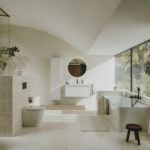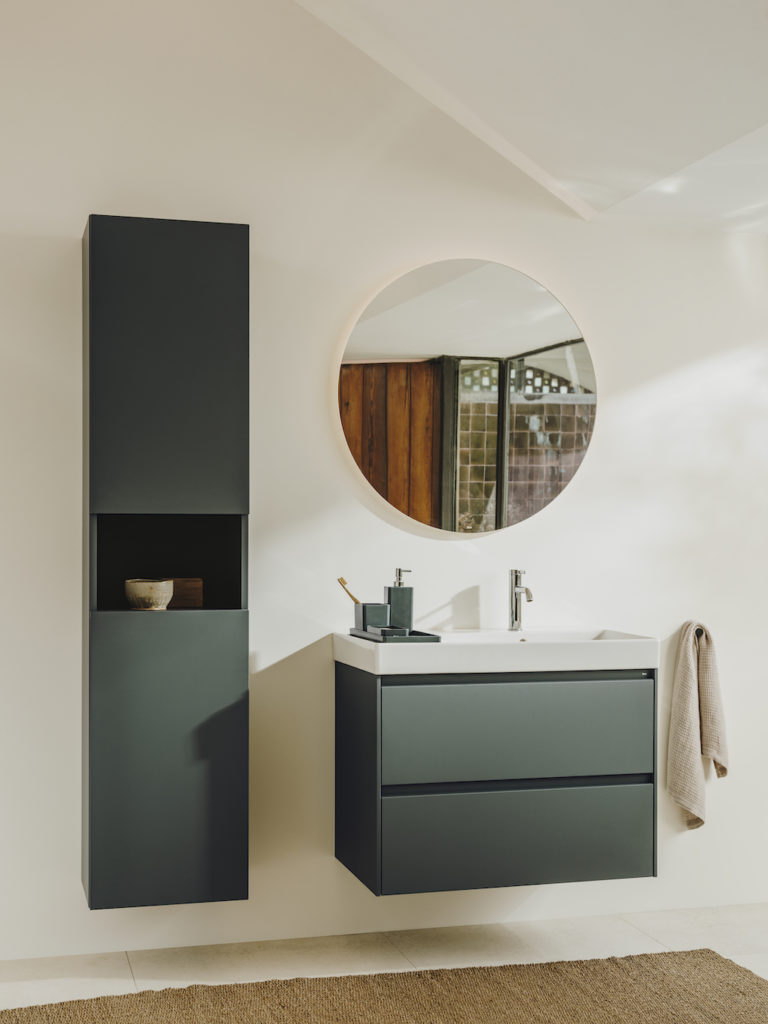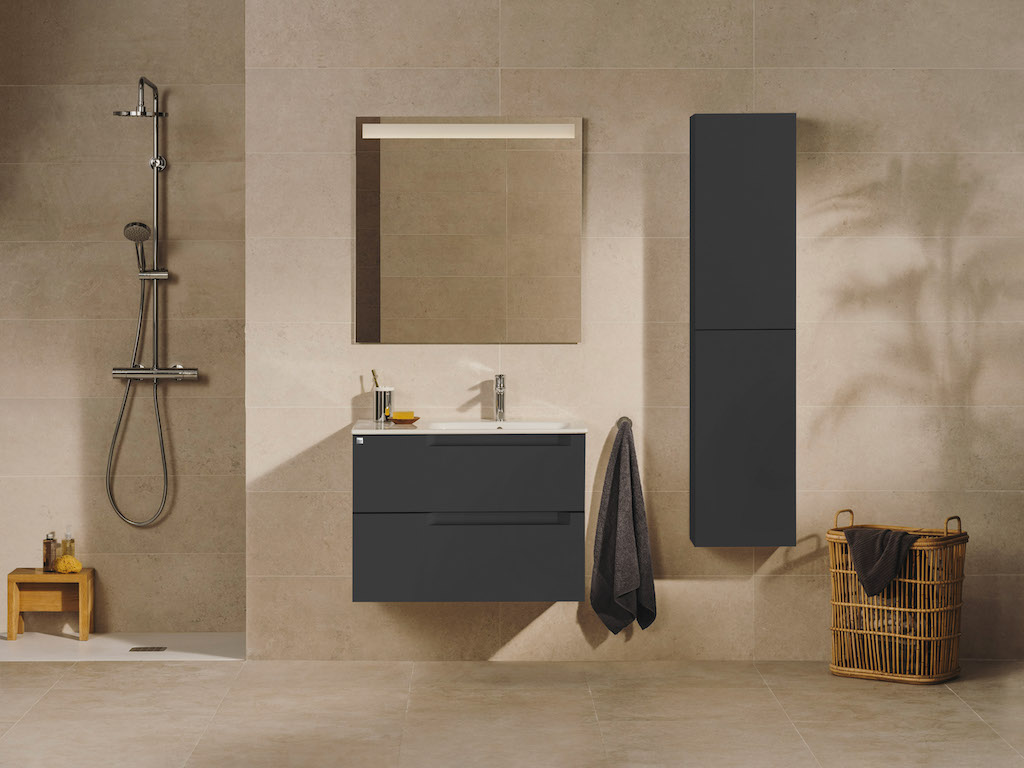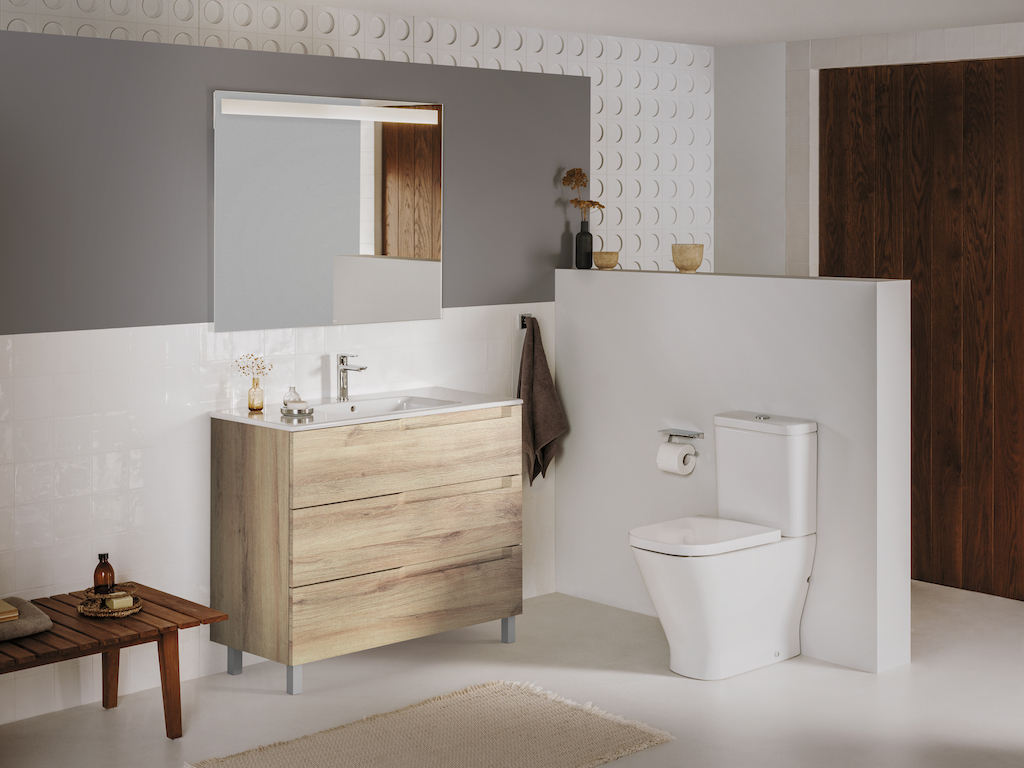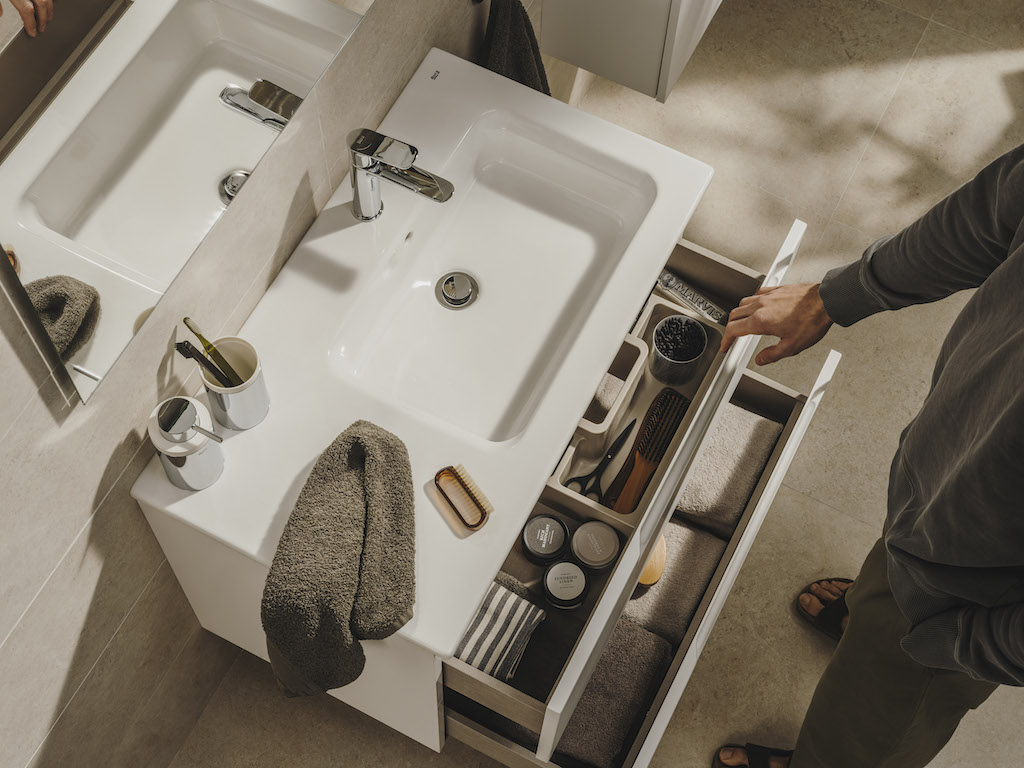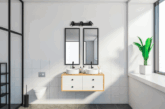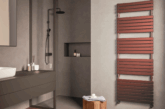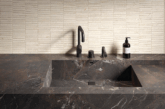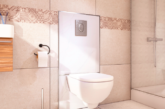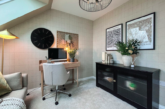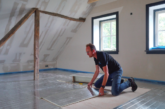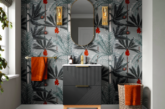Liam Buxton, team manager at Roca UK, looks at current trends for new homes in three critical bathroom areas: brassware, sanitaryware and furniture.
What will bathrooms look like in 2023? Inevitably, some trends have been growing for a while – after all, we’re talking bathrooms, not fast fashion. But the market and public tastes are always shifting, so the next 12 months are likely to bring as much change as the year just gone. Two themes that are consistently important though are sustainability, and the desire for consumers to express their personalities through their homes – especially in kitchens and bathrooms.
Trends in sanitaryware
Hardworking consumers don’t want to spend their precious downtime scrubbing the bathroom. That said, Covid-19 has left homeowners acutely aware of the need for higher hygiene standards and, as such, they are demanding bathroom products that allow for frequent but easy cleaning. There is also an important environmental consideration, as any harsh cleaning products used to remove limescale or tough grime can be detrimental to the ecosystems in our waterways.
Aiding easy cleaning are rimless WCs, whereby the flush vortexes water around the whole of the bowl, cleaning the pan much more effectively than a regular flush. Consumers will also be looking for ceramic pieces that can be treated with an optional additional coating. These modern glazes create a super-smooth surface where microscopic residue simply slides off, so dirt and germs cannot build up. The result is basins and toilets that are altogether easier to maintain. Concepts like this might sound like gimmicks but when the whole bathroom industry adopts them, you know that there’s something in it!
Water saving is another ongoing focus of quality sanitaryware design. Bathroom manufacturers have – rightly – long been held accountable for reducing the amount of water needed to flush a toilet. Now, with as little as four and two litres needed for full and half flushes, consumers can be confident they’re installing a water-saving choice.
Trends in bathroom furniture
Consumers are increasingly looking to express more of their personality in the bathroom: it is no longer a utilitarian space devoid of colour and texture. To reflect this, bathroom furniture is available in a wide range of colours and wood finishes. On-trend right now is a Mediterranean-inspired palette of matt white, matt grey, matt green, dark elm and light oak. These finishes tie in perfectly with the ongoing trend for spa-inspired bathrooms with a strong link to nature.
With house-buyers now expecting en-suite bathrooms plus a cloakroom downstairs, homes today are far more likely to have several smaller bathrooms than the single large family bathroom found in older properties. As such, good storage is crucial for keeping those bathrooms serene and clutter free. Ideally, housebuilders should be seeking to specify storage that is made from materials that are sustainably sourced. What’s more, it should fit the end-users’ needs both now and in the longer term. For example, a vanity unit with compartmentalised drawers to store bathroom essentials more efficiently, and a co-ordinating column unit that can be slotted into otherwise unusable space next to a door or radiator.
Trends in brassware
As one of the hardest-working elements of the hardest-working room in the home, brassware needs to deliver – in terms of aesthetics and functionality as well as longevity. When it comes to selecting brassware, the emphasis should be on quality brands producing quality products. This will ensure brassware looks good, performs well for longer and won’t need replacing too quickly.
In terms of finishes, chrome is the obvious one to choose, as it will reliably keep its good looks year after year. However, adding personality to the bathroom is something that many homeowners are increasingly striving for. As such, PVD coating is a gamechanger. It is anti-corrosive and resistant to limescale, scratching and cleaning products, while also offering on-trend finishes such as rose gold. This popular finish adds a hint of warmth and glamour while accentuating any natural (or nature-inspired) materials chosen for the bathroom – think stone and wood.
Other current consumer favourites include matt black and titanium black finishes, which never fail to make a stylish and highly contemporary statement. These desirable finishes, when coupled with superb product performance, encourage homeowners to keep their brassware for longer, thereby reducing wastage.
In terms of shape, consumers are moving away from the sharp lines of cubic brassware and embracing more forgiving, cylindrical forms, which soften the hard, cold surfaces that dominate the bathroom. Curves are also significantly less clinical than sharp lines and help the space feel more welcoming.

